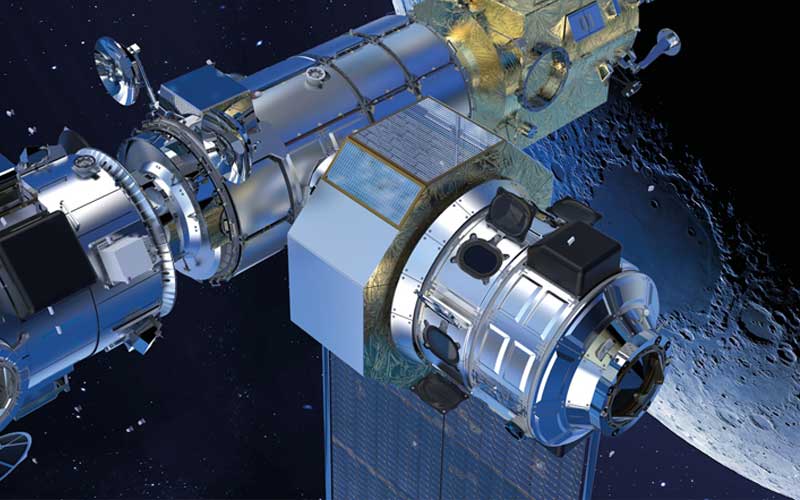
Thales Alenia Space has been awarded a €164 million ESA contract amendment to build a larger than originally planned ESPRIT module for NASA’s lunar Gateway space station.
Europe’s contributions to Gateway were formalized in October 2020, with the signing of the Memorandum of Understanding on Cooperation for the Civil Lunar Gateway. The agreement will see ESA provide the station’s I-Hab and ESPRIT modules, among other key elements, in exchange for securing missions to the lunar outpost for European astronauts.
The European System Providing Refueling Infrastructure and Telecommunications (ESPRIT) module will consist of two main elements: Lunar Link and Lunar View. Lunar Link will provide communications between Gateway and the lunar surface. Lunar View will supply the station with xenon and chemical propellants, powering its ion engines and hydrazine thrusters. This element will also feature a pressurized section with six large windows, offering a 360-degree panoramic view of the station’s surroundings.
In January 2021, ESA awarded an initial €296.5 million contract to Thales Alenia Space for the development and manufacture of ESPRIT. Under this contract, Lunar View was designed to be 3.4 meters wide, 3 meters long, with a mass of 6 tonnes.
On 14 October, Thales Alenia Space announced that it had been awarded an amended contract to expand Lunar View to 4.6 meters wide, 6.4 meters long, with a mass of 10 tonnes. This version of the module offers several benefits, including housing the avionics suite inside the module for easier maintenance and a capacity to carry 1.5 tonnes of cargo at launch, reducing the need for initial resupply flights. The changes will, however, require Thales Alenia Space to adapt all of Lunar View’s subsystems.
According to a 14 October press release, the updated Lunar View design is the result of NASA’s choice to shift the launch of the element alongside a crewed Orion spacecraft aboard an SLS Block 1B rocket. Lunar Link is currently scheduled to be launched alongside the HALO module in 2026. Lunar View will follow in 2030 aboard the Artemis V mission.




